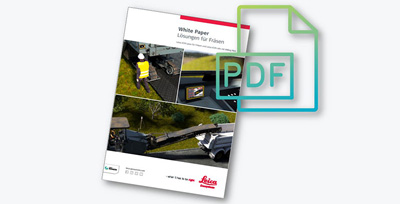Construction diary: "One machine, one operation, done!"
Join for a day Fabian Stöckli, milling operator at REPROAD AG and learn why he enjoys working with Leica Geosystems’ 3D machine control technology.
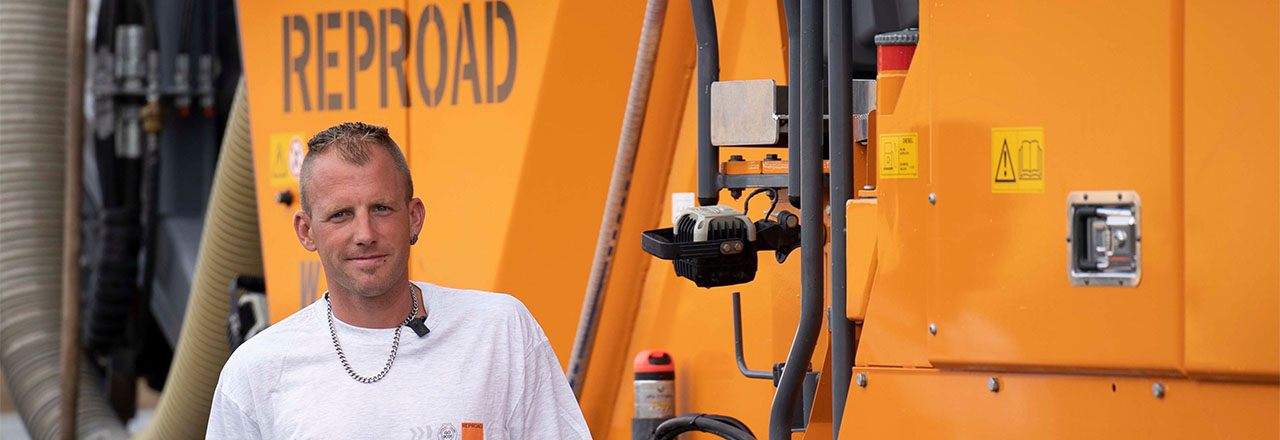
Author: Reka Vasszi
5 o'clock in the morning. The sun rises on the horizon with a light shade of orange and pink behind the green hills over Zürich in Switzerland. We are on the A1 motorway on a section between Effretikon and Winterthur Ohringen, outskirt of the city. Fabian Stöckli, milling operator at REPROAD AG, takes a sip of his coffee while discussing today's project details with Andreas Reinisch, surveyor at KIBAG Bauleistungen AG: the entire milling of a 500-meter-long lane in 3D.
Today's task is part of a long-term maintenance project undertaken by the Swiss government to rehabilitate this 50-year-old motorway. KIBAG AG was contracted to refurbish the 11,5-kilometre-long highway section to ensure maintenance and road safety for another 15 years. In the first step of this maintenance project, REPROAD AG was sub-contracted to precisely carry out the milling job to ensure a smooth and even surface for the paving later.
Plug and play – a quick and easy set-up of the Leica 3D machine control solution

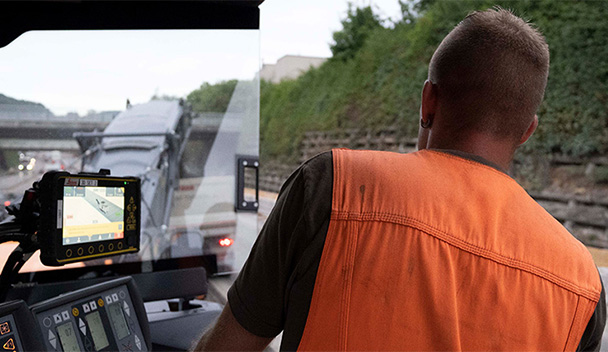
Stöckli started to work for REPROAD 10 years ago and uses his current WIRTGEN cold planer equipped with Leica iCON pave milling 3D machine control solution for four years now. Previously he worked with smaller milling machines, both traditional and equipped with 3D guidance systems.
The morning sun slowly rises over the hills. It is 5.30, and Stöckli finishes his coffee because the first dump trucks are soon arriving to transport the reclaimed asphalt pavement, which then can be recycled into the hot asphalt mix. He jumps in his cold planer and starts to set up the machine for 3D operation. First, he mounts the prism on the machine, and after a couple of minutes, he opens a middle-sized yellow box containing all the remaining components of the 3D solution – a roughed Leica MCP80 panel and a docking station. The rest of the hardware (LRBT radio, various sensors) has been already mounted on the cold planer by Leica Geosystems support engineers to make the start of those early mornings as smooth as possible for operators – just plug in and you are ready to play.
Smooth and error-free operation thanks to an automatic leapfrog function
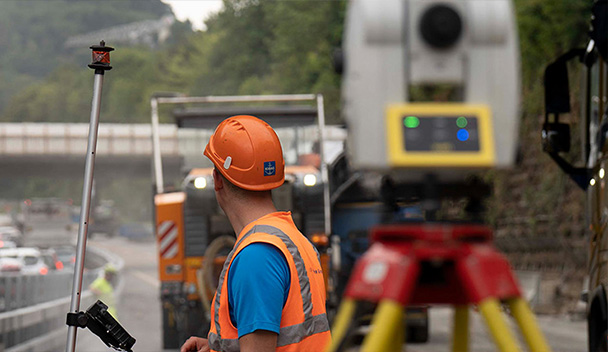
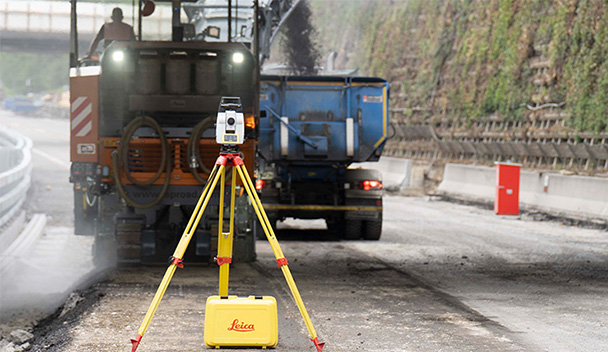
It is 5.40, and while Stöckli is ready with his quick set-up routine for 3D milling, Reinisch places two total stations on the road. One at the beginning and the other total station at the end of the section that is needed to be milled. The total stations are tracking the prism all the time. Thus, the system always knows the position of the cold planer and the milling bit tips. The second total station is set up for automatic leapfrog. This means for instance that if the first total station is interrupted by a truck that is arriving or departing, the next total station automatically takes over the positioning and communication with the 3D system.
After setting up and calibrating the total stations, Reinisch is loading the previously prepared digital model with a USB to the 3D machine control system. Alternatively, he often uses Leica ConX, a cloud-based collaboration tool, to send data directly from the office to Stöckli’s machine control system. Once, the surveyor chose the right reference model and hit start, Stöckli is ready to mill in 3D.
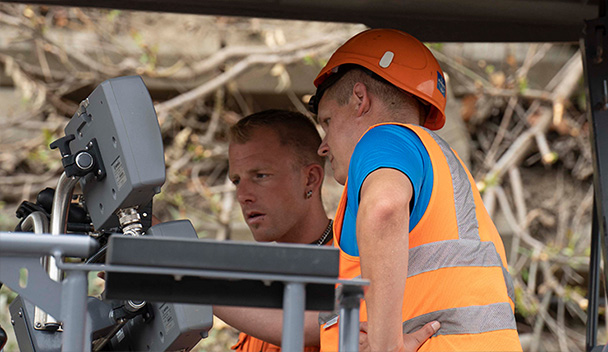
Leica Geosystems’ support is just a phone call away
Both the operator, Stöckli, and the surveyor, Reinisch, are grateful for the remote support services Leica Geosystems offer. If there is any problem on-site, they can directly call the support team, who can help to solve the issue by remotely connecting to the instrument via Leica ConX. Luckily, the 3D system is very stable and reliable; thus, Stöckli doesn’t have to contact remote support at all.
“One machine - one operation - done!”
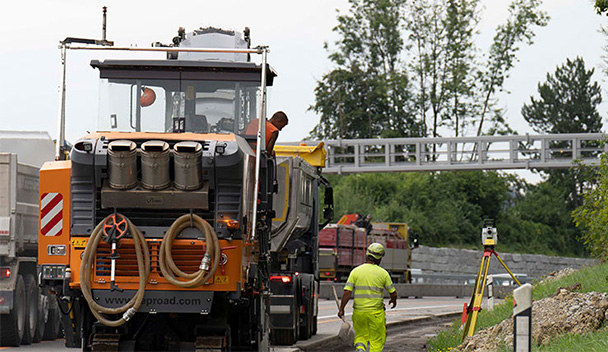
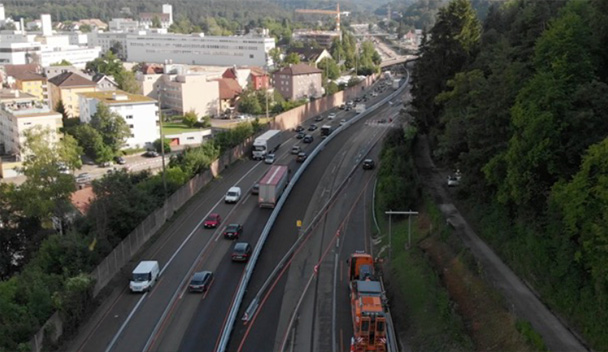
It is 6 pm, and Stöckli is cleaning his orange-coloured WIRTGEN milling machine from the dust after the long working day. Now, we have more time to chat about his experience of using the 3D solution for a couple of years now.
“The advantage of milling in 3D is that you directly have an accurate finished level,” explains Stöckli. “When milling with machine control, the requested level is made at the same time as the material is removed. One machine - one operation - done!”
Leica Geosystems’ technology helps the entire construction team to work efficiently and to solve the tasks in the shortest possible time and with the highest precision. Cloud collaboration tools, such as Leica ConX, connect all instruments and the people on the site with the data and colleagues in the office. This connectivity of the data and the ease of use of the technology help Stöckli and Reinisch to focus on the essentials and save time by utilising the right tools.
It is 6.15 pm, and Stöckli jumps back in his truck to drive his beloved milling machine home. The last rays of the setting sun are goldening the highway and slowly the orange truck with Stöckli is blurred into the horizon.

